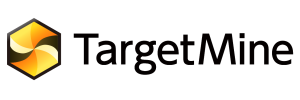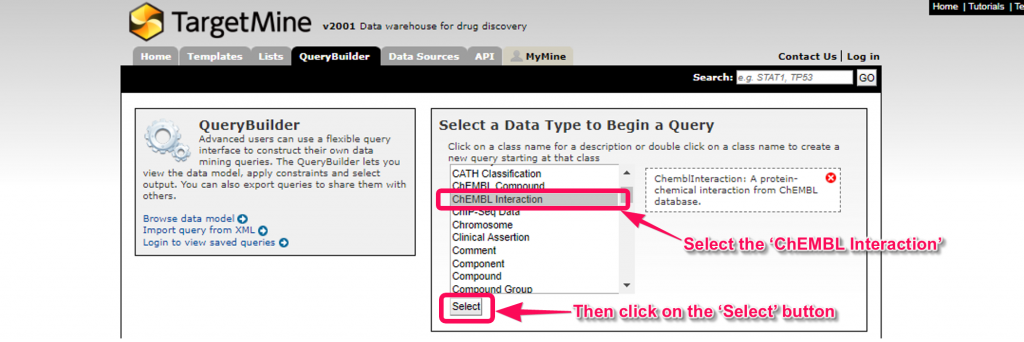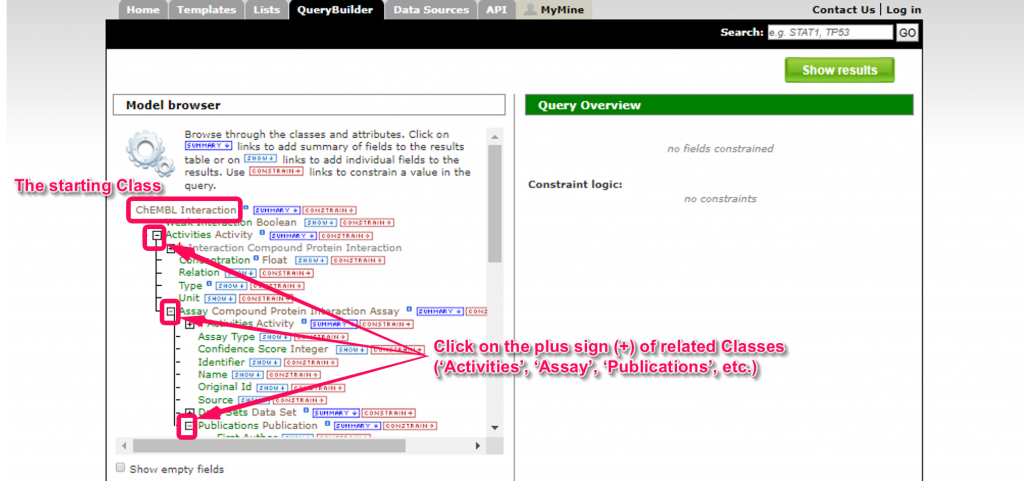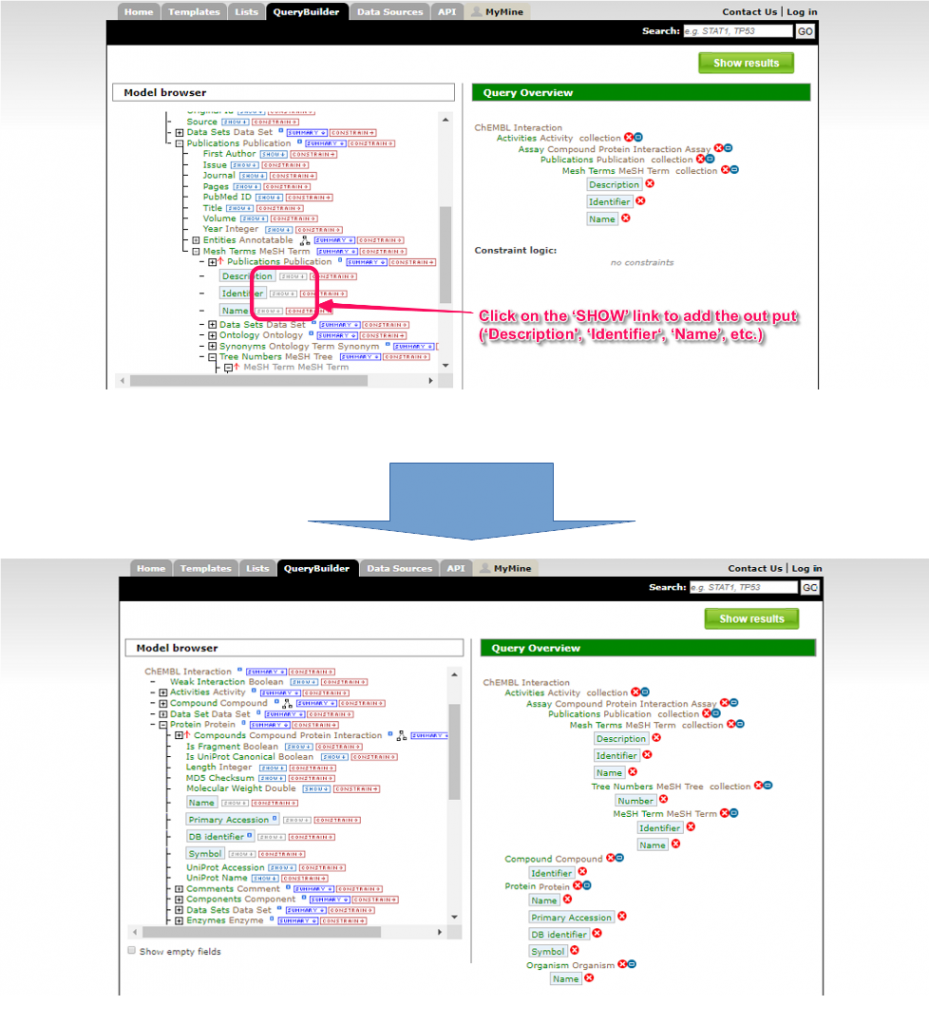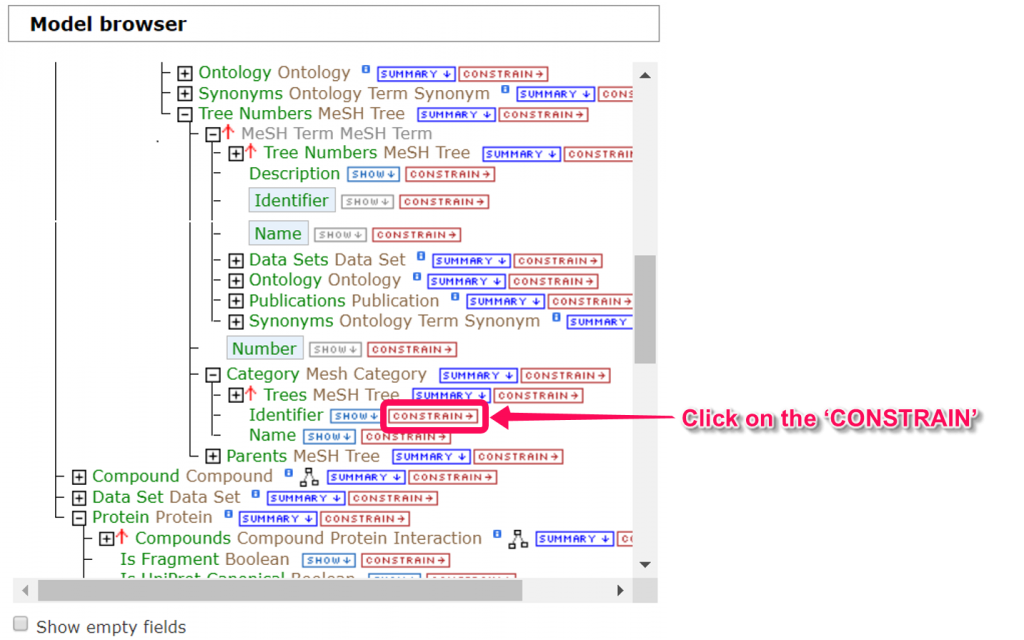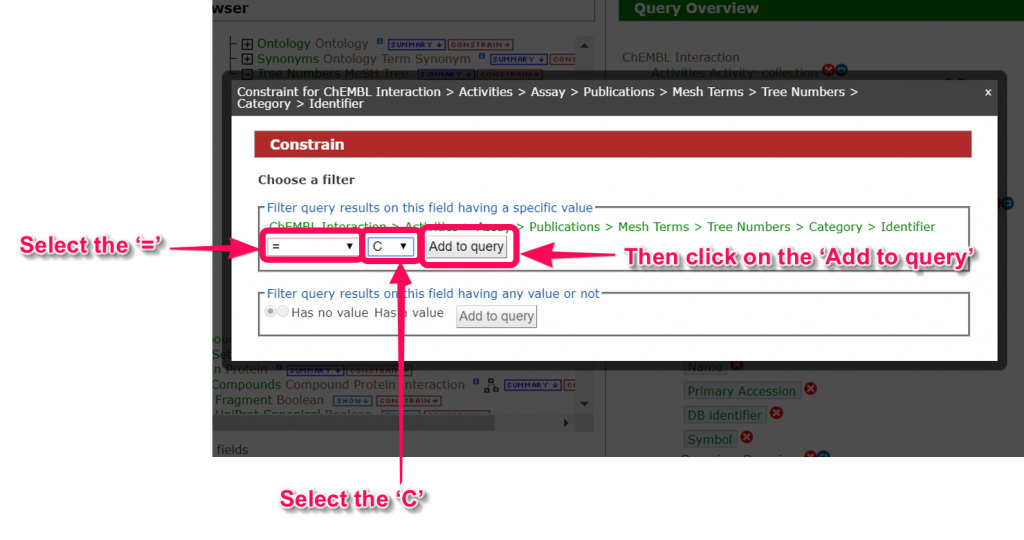In addition to the [ChEMBL compounds->Target->gene->disease relationship] use [CheEMBL Interaction->Assay->publication->MeSH(disease term)]. There is no guarantee that there is correlation between a compound and a disease though they appeared in the same publication.
1. Go to the TargetMine main page and click the ‘Query Builder’ tab.
2. Select the ‘ChEMBL Interaction’ and click the ‘Select’ button to begin a query.
3. The ‘Model browser’ displays TargetMine data model in a tree structure. If the user clicks on the plus sign (+) next to the class name, a list of sub classes is displayed.
For example, if we start from the ‘ChEMBL Interaction’ root class, and click next to ‘Activities’, the sub classes ‘Assay’ will be displayed.
To reach ‘Category’, you have to go from ‘ChEMBL Interaction’, ‘Activities’, ‘Assay’, ‘Publications’, ‘Mesh Terms’, ‘Tree Numbers’, ‘Category’, and finally, ‘Category’. Likewise, you can reach also ‘MeSH Term’ (‘ChEMBL Interaction’->’Activities->’Assay’->’Publications’->’Mesh Terms->’Tree Numbers->’Parents’->’MeSH Term’), ‘Compound’ (‘ChEMBL Interaction’->’Compound’), ‘Organism'(‘ChEMBL Interaction’->’Protein’->’Organism’).
4. You can select the fields to add the result table by clicking on the ‘SHOW’ link. For example, let’s select ‘Description’, ‘Identifier’, and ‘Name’ in ‘Mesh Terms’ class, ‘Number’ in ‘Tree Numbers’ class, and ‘Identifier’ and ‘Name’ in ‘MeSH Term’ class, ‘Identifier’ in ‘Compound’ class, ‘Name’, ‘Primary Accession’, ’DB identifier’ and ‘Symbol’ in ‘Protein’ class, ‘Name’ in ‘Organism’ class.
Selected fields are displayed in the ‘Query Overview’.
5. In this tutorial, we will put the restrictions on retrieval range in the ’Mesh Category’ for immediate results. When we click on the ‘CONSTRAIN’ link of ‘Identifier’ in ‘Category’ class, the ‘Constrain’ window will pop up. For example, you can select the ‘C’ from the pulldown list and click the ‘Add to query’ button.
Unrestricted retrieval will apply a high load to the server, therefore, let us know before submitting your job.
You can download an unrestricted result table from here.
6. In the ‘Fields selected for output’ area, we can change the order of the fields in the column of the results table by drag and drop the field boxes.
(Please see step 6 in the case 1.1)
7. Click on the ‘Show results’ button to see the query results.
(Please see step 7 in the case 1.1)
8. To see and save the query result, please see step 8 and 9 in the case 1.1.
